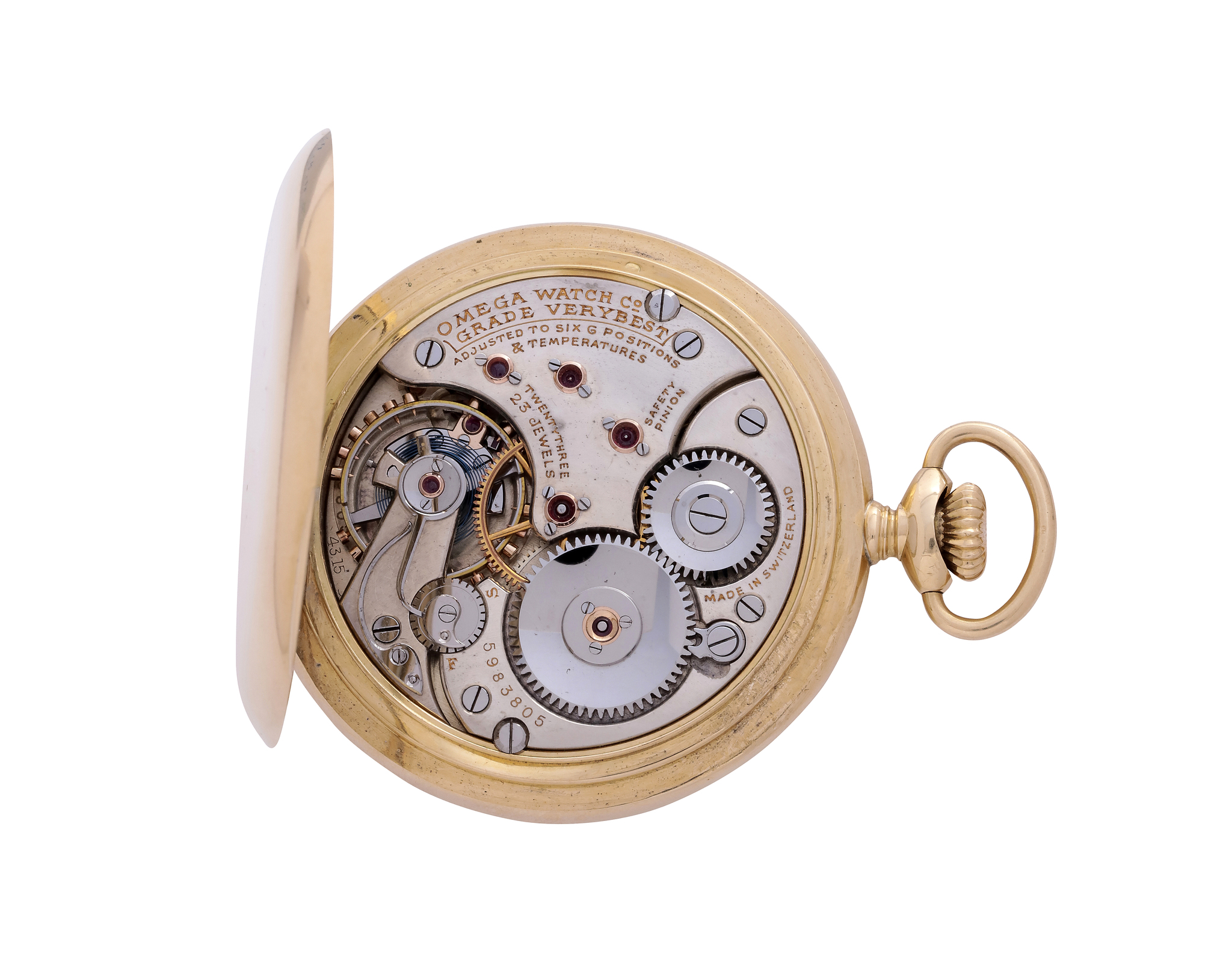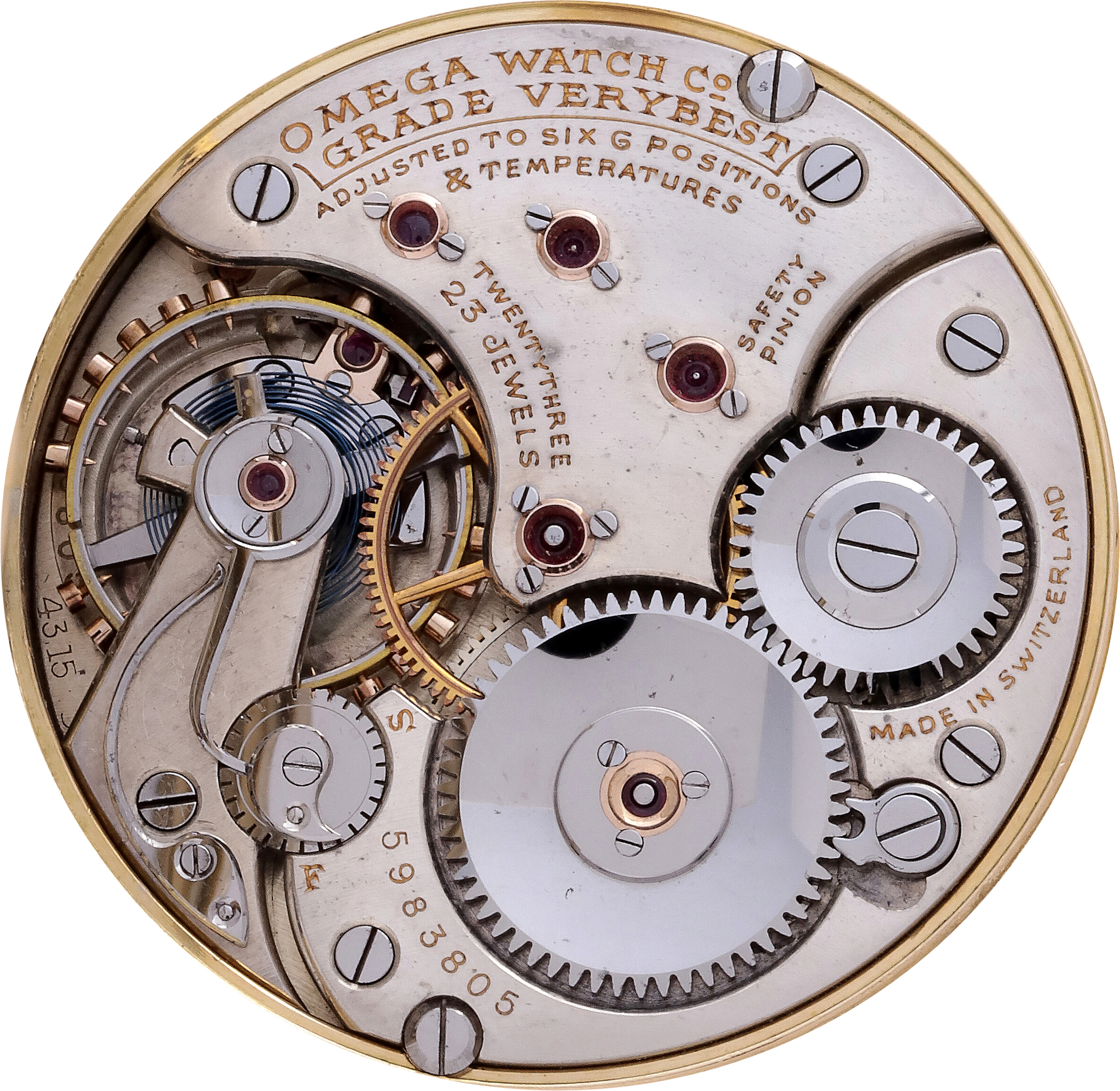Important Modern & Vintage Timepieces
Hong Kong, Jul 23, 2020
LOT 20
Omega
Pocket chronometer, calibre 43.15 S; “Grade Very Best”; limited production of 300 examples; 14K yellow gold
HKD 56,000 - 72,000
CHF 7,000 - 9,000 / USD 7,400 - 9,500
14K yellow gold, hunting-case, keyless-winding, round-shaped, pocket chronometer, with subsidiary seconds at 6.
White enamel dial with suspended “Breguet” numerals, with the word “Chronomètre” in red at 12 o’clock.
Cover and case-back polished; cover engraved in taille-douce (fine cut) with the cypher “J J”; cuvette (dome) engraved in taille-douce (fine cut) with the mention “Chronomètre”.
Movement 18’’’, calibre 43.15 S, “Grade Very Best”, rhodium-plated, 23 jewels, going barrel with safety pinion, gold train of wheels, gold screwed-chatons (setting), straight-line equilibrated lever escapement, cut bimetallic compensated balance with gold poising screws and blued steel hairspring with terminal curve, index regulator with swan-neck spring and precision-regulating device for fast / slow by means of an eccentric snail, adjusted to 6 positions and temperatures.
| Grading System | |
|---|---|
Grade: AAA |
Excellent |
Case: 3-8 |
Good Slightly scratched |
Movement: 3* |
Good Overhaul recommended, at buyer's expense |
Dial: 2-01 |
Very good HANDS Original |
Brand Omega, Bienne / Biel
Model Grade Very Best
Year circa 1921-1922 and circa 1925
Movement No. 5 983 805
Case No. 7 607 463
Caliber 43.15 S, “Grade Very Best”, lever escapement, adjusted to 6 positions and temperatures
Dimensions Ø 51.8 mm.
Signature dial, case and movement
Notes
Omega, Calibre 43.15 S “Grade Very Best”
The “Grade Very Best” replaced the “DDR” as Omega’s highest quality chronometer movement in July 1922. This calibre was made in 600 examples: 300 “Lépine” movements (for open-face watch) and 300 “savonnette” movements (for hunting-case watch).
The “Grade Very Best” replaced the “DDR” as Omega’s highest quality chronometer movement in July 1922. This calibre was made in 600 examples: 300 “Lépine” movements (for open-face watch) and 300 “savonnette” movements (for hunting-case watch).
The term “Very Best” was trademarked by Omega for dials, cases and movements in 1904.
The present watch cost 1 085 Swiss francs in 1929. By way of comparison, that same year Tiffany & Co. sold a Patek Philippe minute-repeating perpetual calendar pocket watch with moon phases, split-seconds chronograph and 30-minute recorder for 2 835 Swiss francs, and a standard 18K gold hunting-case pocket watch with 20’’’ movements could be bought for 385 Swiss francs.
The fact that this watch cost nearly 40 % as much as a highly complicated Patek Philippe and over four times as much as that company’s standard production is due to the cost of manufacturing such a high-precision movement.
Precision movements are made to much smaller mechanical tolerances than standard watch movements and often take as long to manufacture and regulate as complicated movements. Precision watches were also prized possessions and were often reserved for the manufacturer’s best clients.




